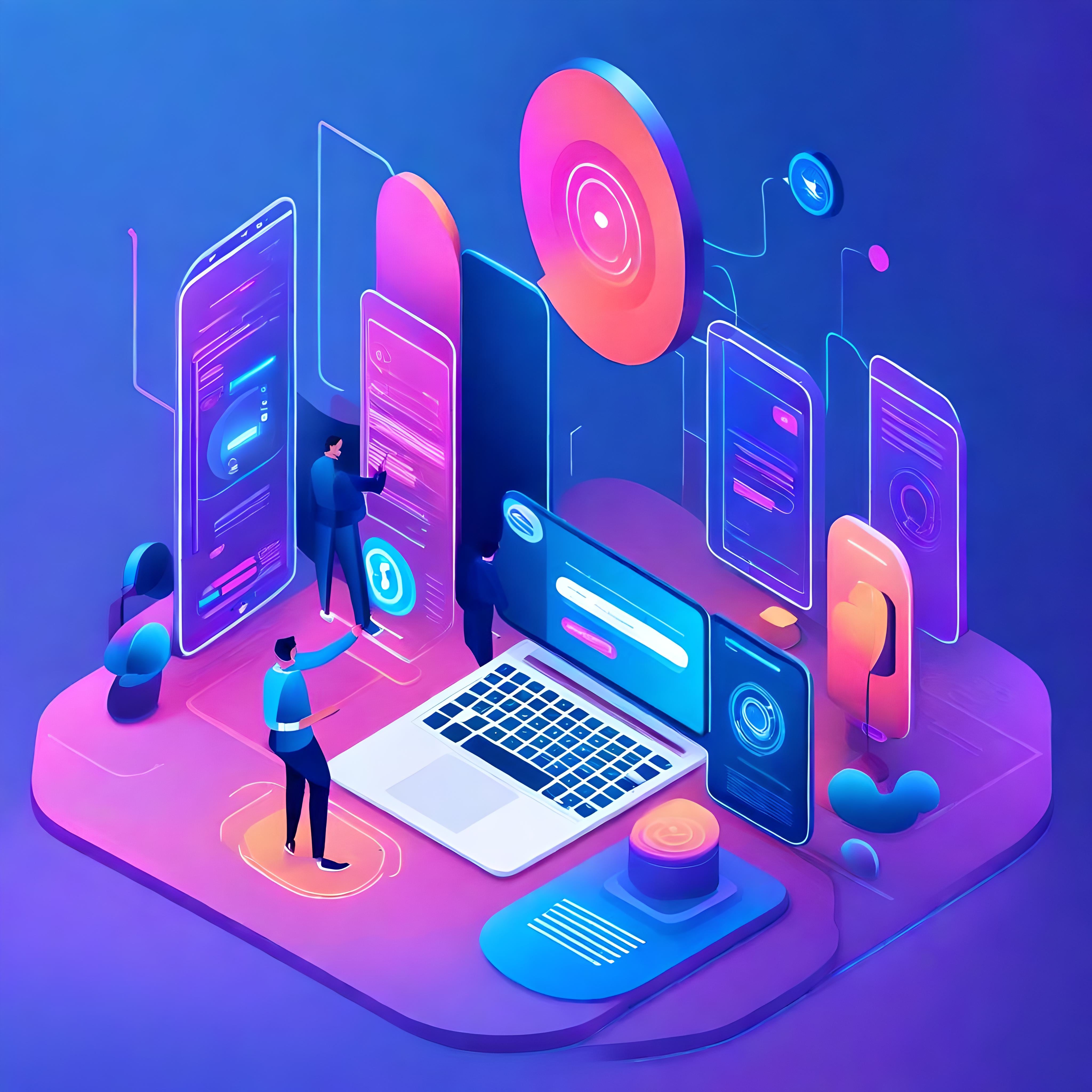
In today’s fast-paced digital landscape, web development is undergoing a deep transformation thanks to the ever-expanding capabilities of Artificial Intelligence (AI). The integration of AI in web design and development is not just a trend; it’s a game changer that dramatically alters user experience and the development process.
This article is your essential read on how AI is transforming the way we create web experiences, making them more personalised, efficient, and future-proof. Dive in to explore how AI can be integrated into UI/UX to not only streamline your design process, but also anticipate and adapt to your users’ needs in real-time.
Leveraging AI for Human-Centred Design
Human-Centred Design revolves around placing the user at the forefront of every design decision. It’s about crafting experiences that resonate with individual preferences and needs. AI, with its ability to process vast amounts of data and deliver personalised recommendations, is a powerful ally in achieving this goal.
Imagine visiting a platform and being immediately presented with a curated list of options and data tailored to your tastes. This is the magic of AI-driven personalization. Platforms like Youtube have perfected the art of using AI algorithms to analyse your viewing history, preferences, and behaviour. As a result, they provide you with content recommendations that feel like they were handpicked just for you.
Streaming services are not the only platforms that can take advantage of this usage of AI. E-commerce websites, news aggregators, and even e-learning platforms are utilising AI to understand user behaviour and preferences, delivering a tailored experience that keeps users engaged.
Integrating AI Seamlessly into UI/UX
While the capabilities of AI are awe-inspiring, integrating them into a user interface and user experience (UI/UX) is not without its challenges. An AI-powered feature should feel like a natural part of the design, enhancing the user experience rather than causing disruption.
Introducing AI features gradually, allows users to adapt at their own pace. An excellent example of this can be found in Google’s search engine, which smoothly provides predictive search suggestions as you type your queries. It feels like Google understands your intent and is assisting you in finding the information you seek.
With so much focus and necessity to prepare the future for the AI potential, designers must think ahead. AI models and capabilities continue to evolve, and a forward-thinking approach is essential. A well-designed interface should not just accommodate current AI features but also anticipate and prepare for future AI advancements.
Voice assistants like Siri and Google Assistant are some examples of this approach. They are designed to anticipate and integrate new AI capabilities and interactions as technology evolves. Their adaptability ensures that they remain relevant and valuable to users as AI continues to progress.
On the practical side of things: how can we design and develop platforms and solutions that leverage AI effectively?
- Understanding AI Technologies: The journey begins with a deep understanding of the AI technologies you plan to incorporate into your solutions. Whether it’s natural language processing, image recognition, or predictive analytics, understanding the capabilities and limitations of AI is crucial.
- Data Collection and Preparation: AI thrives on data. Ensure that your platforms are equipped to collect, store, and process relevant data. Pay attention to data quality and privacy considerations as well.
- Collaboration Between Designers and Developers: Effective AI design and development require close collaboration between designers and developers. Designers should have a clear understanding of AI’s capabilities and potential, while developers must be able to seamlessly implement AI-driven features .
- Human-Centred Design Iterations: Implementing AI should be a user-centred process. Continuously iterate on your designs, incorporating user feedback and behaviour data. This approach ensures that AI enhancements align with user needs and preferences.
- Testing and Validation: Rigorous testing and validation are a must. Ensure that your AI-driven solutions perform as expected, are free from bias, and maintain user privacy. Develop testing protocols and consider third-party audits for unbiased assessments.
- Scalability and Future-Readiness: Design your solutions with scalability in mind. As AI models evolve, your platforms should be ready to adapt. Consider the architecture and infrastructure required to accommodate future AI advancements, whether we talk about fluctuations in cost per token, latency of responses and congestion of GPUs.
- Ethical AI by Design: Make sure ethics is at the core of your design and development process. Consider fairness, transparency, and user control from the very beginning. Be prepared to make adjustments as AI technologies and regulations evolve.
Designing and developing AI-powered solutions is a journey that requires a blend of creativity and technical know-how.
In conclusion, AI is no longer on the horizon; it’s at the heart of web development and design. It has the potential to create user-centred experiences that adapt and evolve, while keeping up with ethical standards. As designers and developers, we have the opportunity to harness the power of AI to shape the future of the web.
AI isn’t just another tool. Embrace it, experiment with it, and use it to create web interfaces that are not just functional but delightful, seamless, and ever ready for what the future holds.
The Non-Technical Founders survival guide
How to spot, avoid & recover from 7 start-up scuppering traps.
The Non-Technical Founders survival guide: How to spot, avoid & recover from 7 start-up scuppering traps.

